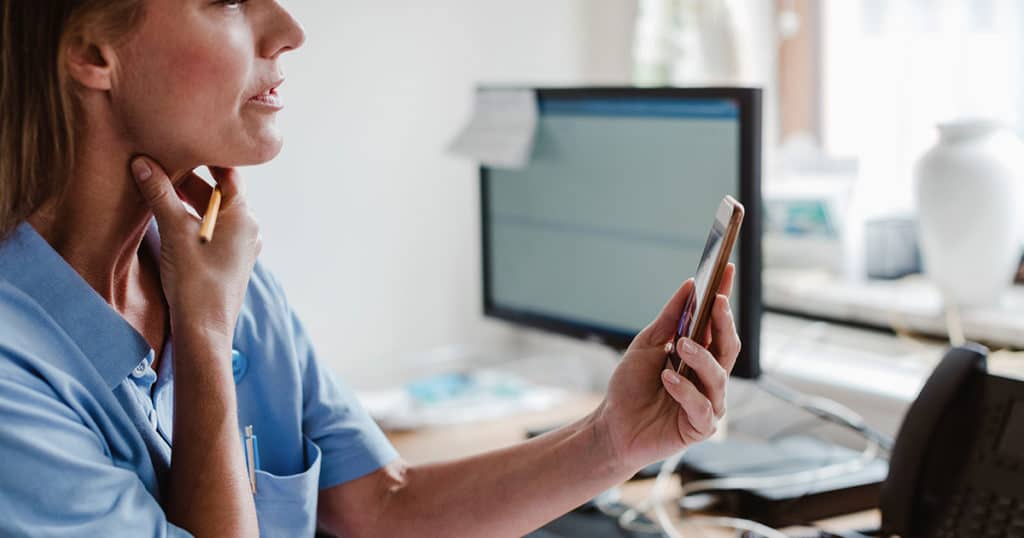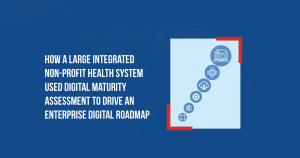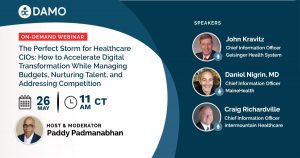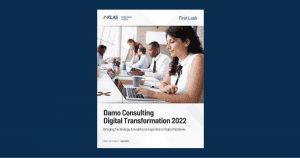How to win physician confidence in remote patient monitoring programs
CIOs need to look beyond just EHRs and explore standalone platforms to enhance care delivery – keeping focused on reliable patient data and streamlined clinical workflows.

COVID-19 has spurred telehealth and remote patient monitoring adoption across the United States, with 36 percent of the US consumers now using telehealth to replace healthcare visits.
While this has created an opportunity for health systems to digitally transform their care delivery model, not all health systems have the right resources and the organizational support to drive this change.
Among the many challenges, one significant factor concerning the CIOs of these health systems is the lack of willingness in the clinical community to support a transformation of IT to adopt new care delivery models.
In the remote monitoring space, the clinician community’s lack of confidence in the quality of data, especially self-monitored and patient-reported data, was a challenge despite the obvious benefits of managing large chronic populations through connected devices.
Given the need to integrate remote patient monitoring, CIOs are compelled to look beyond just EHRs and explore standalone platforms to enhance their care delivery. As CIOs, they must also use the available tools and work strategically towards an enterprise transformation.
To ensure these providers make the best use of the available resources while planning for the long term, CIOs must consider the following.
Choose the right device to get reliable patient data and reimbursement
Today, many health devices and wearables are hitting the market, but not all are approved by the CMS for reimbursement. For reimbursement by the CMS, a device must be an FDA-listed device.
However, an FDA approval ensures a medical device is safe and effective for its intended use. FDA classifies medical devices into three classes based on risk to human life. Depending on this classification, a medical device must undergo different regulatory processes, including a clinical trial.
The FDA also provides necessary guidelines for operating a device and supporting documents highlighting the dos, don’ts, and pros and cons, thus helping make informed decisions.
Remote monitoring devices allow clinicians to monitor patients for vitals like respiratory rate, heart rate, temperature, heart rate variability, and blood oxygen saturation levels, thus enabling informed decision making in time.
Map physician workflows and win their confidence
Implementing a remote patient monitoring program in a hospital involves the stakeholders and physicians from all specialties with virtual care. The physician inputs can help identify and prioritize specialty services when defining the roadmap for remote patient monitoring programs.
The factors that can help prioritize each specialty’s services must include the need to function remotely, available budget, ROI, and the use-case mix of each department under consideration.
Each specialty has its use cases for which they are open to conducting virtual visits. These use cases must be assessed before shortlisting devices by specialty.
For example, cardiology requires more digital monitoring devices than other specialties to monitor BP, weight, heart rate, and EKGs in real-time. At the same time, dermatology may simply do with a high-resolution, good quality camera.
Adopting FHIR standards for integrating data with a physician’s daily workflow
A typical day in the life of a busy physician includes seeing scheduled appointments in the outpatient and inpatient rounds and emergency visits in between. To accommodate a patient’s follow-up remotely within the routine requires the physician to have prior clinical documentation along with the patient’s current vitals.
For a seamless remote follow-up of a patient, devices are integrated within the EHR for a physician to view device readings in context with the clinical documentation of the patient.
Measurements and data from personal health devices must reach caregivers through platforms that are in sync with the devices, usually through a mobile application. Today, there are as many formats in which data is sent to personal health gateways as there are devices in the market.
This lack of standards creates challenges for developers who end up writing code for every separate instance of a device. FHIR resources or data packets define the essential resources required to convey data from the devices to FHIR servers and eventually to the receiving systems like an EHR in a standard format. When received in the standard format and plugged into the EHR, data from these devices can help the physician diagnose a patient holistically.
Remote patient monitoring uses three primary FHIR resources:
Patient. The patient resource provides demographic information about a patient. The patient identifier within this resource is a key attribute that links the patient to the device. Implementers can choose not to expose the PHI of a patient or keep it open.
Device. In FHIR, the device resource is used to describe the static components such as device identifier, manufacturer, name, model number, location, the status of the device, and any other information.
Observation. This resource is the most important component that holds the actual data about the vital parameters being measured. The Observation resource contains the actual results, timestamp, reference ranges, and device details of the measured parameters.
The large variance in the physiological readings and data collected from patient health devices can be bundled into primarily six types of observations mentioned below:
- Scalar: For example, temperature, weight, steps, pulse, glucose- anything that can be described in a single number field
- Vector: Measurements that require more than one value to describe, e.g., BP, acceleration
- Code: When measures are described by a finite set of options in the context of a reading, for example, the timing when a reading is taken, such as pre-prandial, fasting, bedtime
- Event/State: This type of measurement is used to monitor applications, e.g., the status of a humidifier, whether the patient is in or out of a room in an independent living facility, or a marginal signal in a pulse oximeter.
- Waveform: Periodic data is mapped to waveform data, e.g., ECG traces
- String: This captures string data when measurements are in a text format and are only used to display.
COVID-19 has provided an impetus to the remote patient monitoring market. The updated physician fee schedule released in December 2020 has addressed changes to the Care Management Services and Remote Physiologic Monitoring Services, reflecting the changing medical practices trends.
A physician-friendly reimbursement environment, devices that can be relied on, integrated workflows, and policies to encourage remote patient monitoring will help physicians provide remote care with ease.
CIOs of health systems must overcome financial constraints and lack of resources by turning the situation around to their advantage. Start with determining organizational priorities, winning stakeholders and physician confidence, and building rigorous governance to drive digital initiatives while tracking and reporting on benefits, to drive digital transformation with remote patient monitoring in their enterprises with ease.















